After our hikes around Lewis Pass we continued west to a former gold mining area around the town of Reefton. For this trip we picked just one of the old settlements to explore, and made our way to Lyell which we had read still had some gold mining equipment.
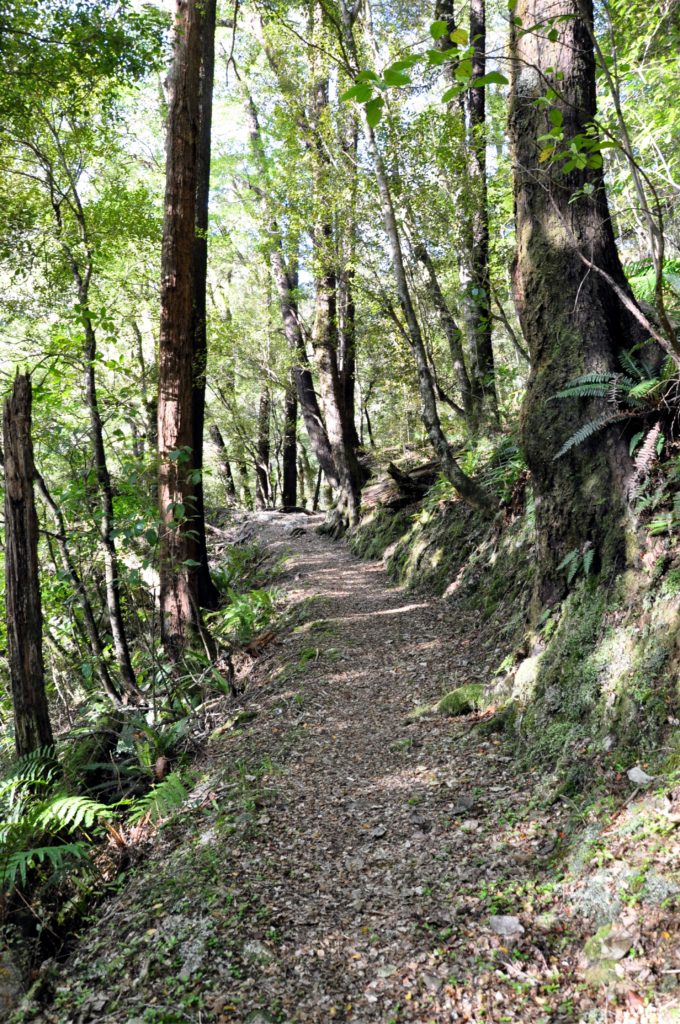
We found a short loop to walk that would take us past some of the remains from the gold mining town. The gold rush in this area started around 1863 and eventually around 2,000 people lived here during the town’s heyday from 1880 to 1896. The town was known as the most ‘inaccessible goldfield in New Zealand’, which was easy to imagine as we made our way up along the steep hillside.
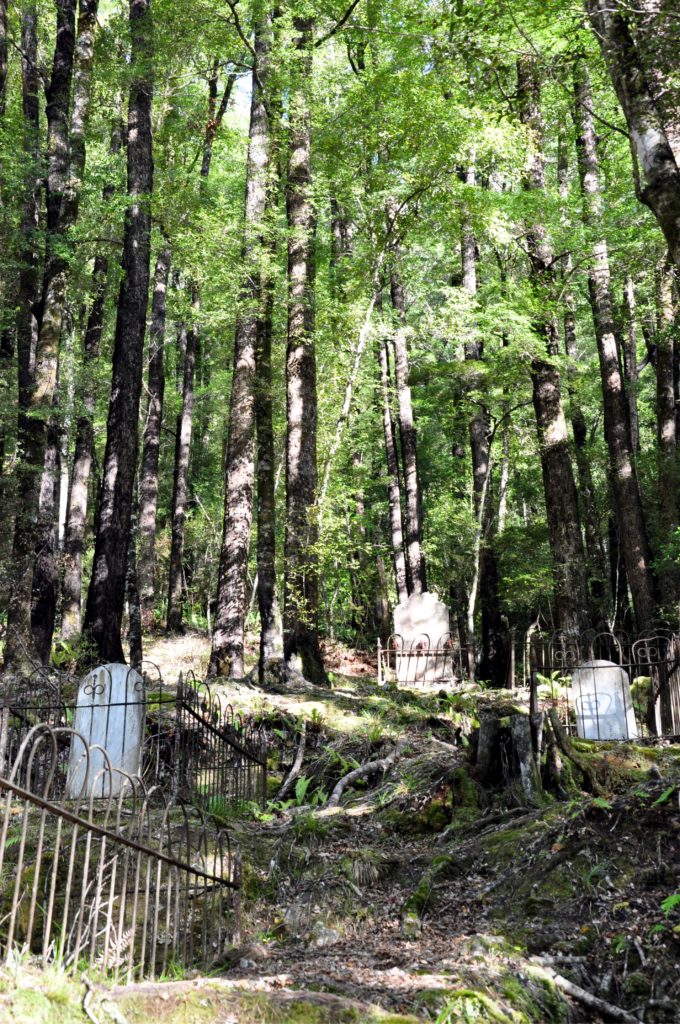
Our first stop was at the Lyell cemetery, which was only in use at this site from 1870 – 1900. Despite the poor conditions and the dangerous work in the mines, we were surprised to see on several of the headstones that people had lived to fifty or sixty years old. The trail continued down towards the river at Maori Bar, the site of the first gold strike in 1862. Looking across from the bridge we could see the tunnel that miners had driven through the rock to dewater the creek bed for easier mining.

From the river the trail climbed steeply to join into the old Dray Road, we passed the site of the former hotel which was the last building standing when it was destroyed by fire in 1963. Two previous fires had already caused the town to loose inhabitants coupled with the closure of two of the main mines. The final blow to town was the magnitude 7.8 earthquake that hit the area in June of 1929, and whilst there were no severely damaged buildings reported in Lyell, the town was cut off for around eighteen months. Despite the lack of residential structures, we were able to see some of the ruins from the Croesus Battery.
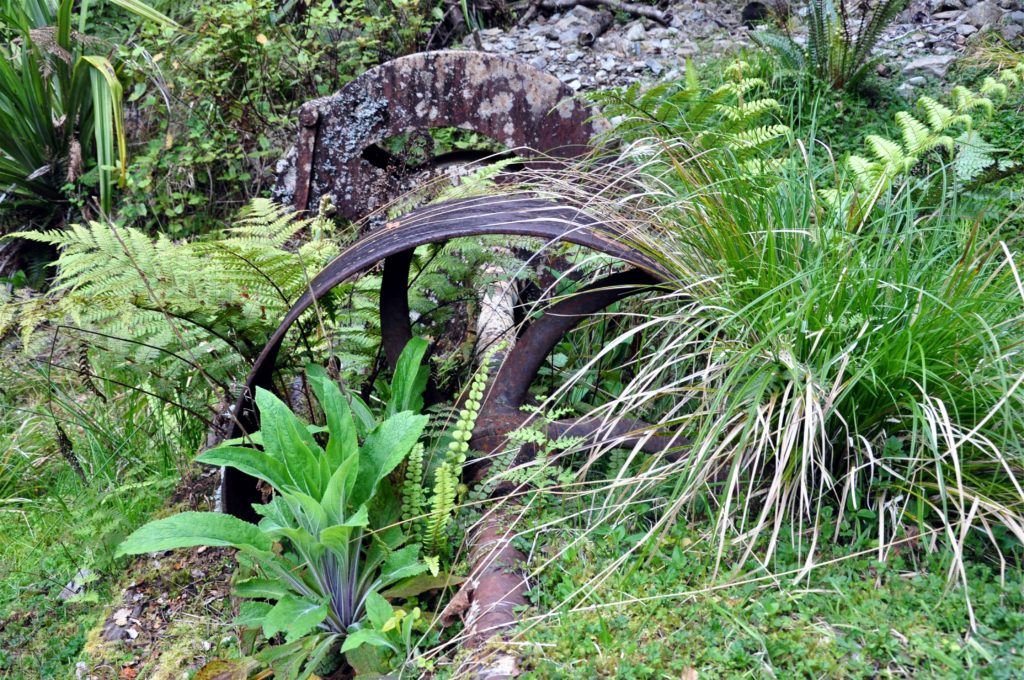
The forest here is so lush, it is easy to see how many of the remains have been swallowed up by the undergrowth. The old battery site is the remains of the Croesus Quartz Mining Company’s machinery. This short-lived company had a 10-head battery powered by a turbine shipped from Dunedin to Westport in 1882, from where it was transported in sections to this site.
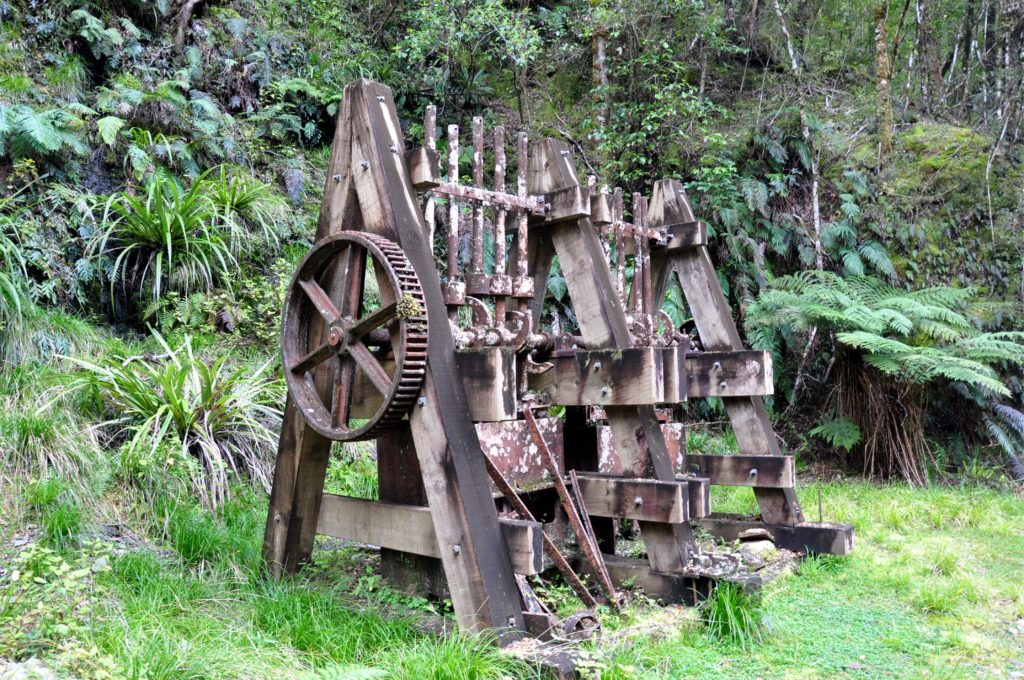
The Croesus mine was on three levels, and the ore was tipped into a storage bin on the upper level which fed into the stampers where it was crushed. The ground rock was then further processed in berdans’ (revolving dishes) to further extract the gold.
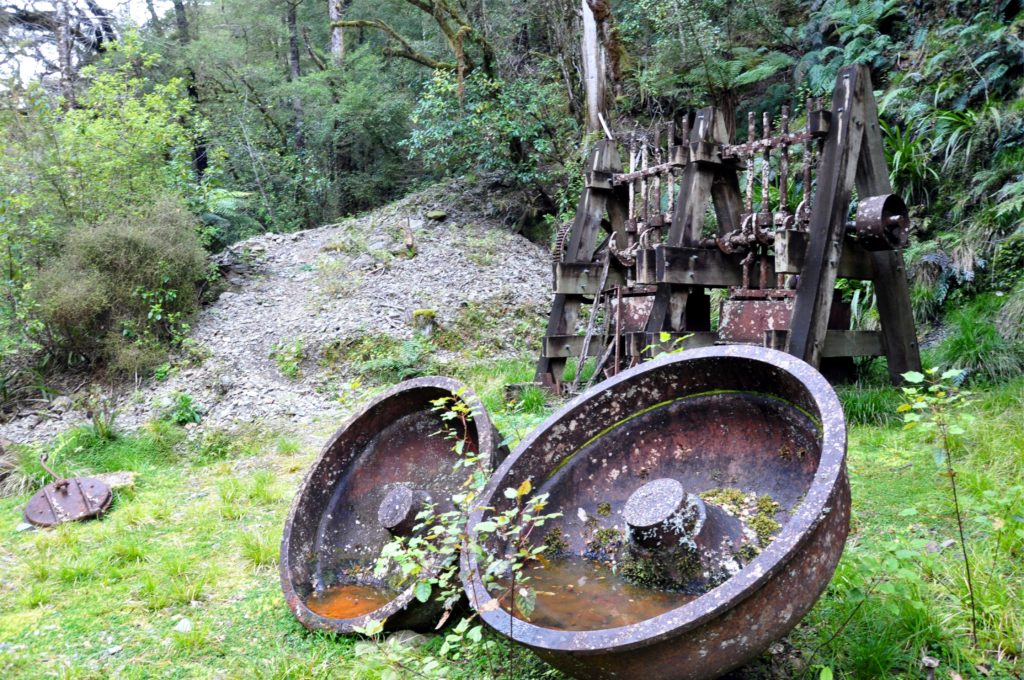
The turbine that powered the battery was fed by a water race that came from a dam about a mile up Lyell Creek.

By 1885 work at the mine and battery ceased due to poor grade stone. Although various attempts were made to reopen the mine, the mine was never fully operational. Other mines in the area, such as the Alpine mine, four miles further up the creek were significantly more successful and accounted for much of the growth in the town of Lyell.
